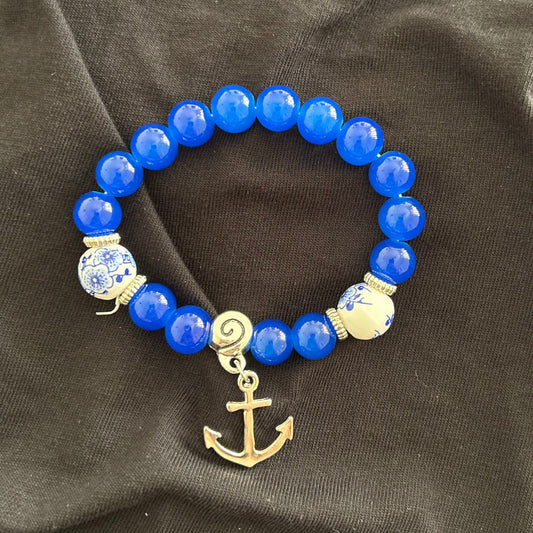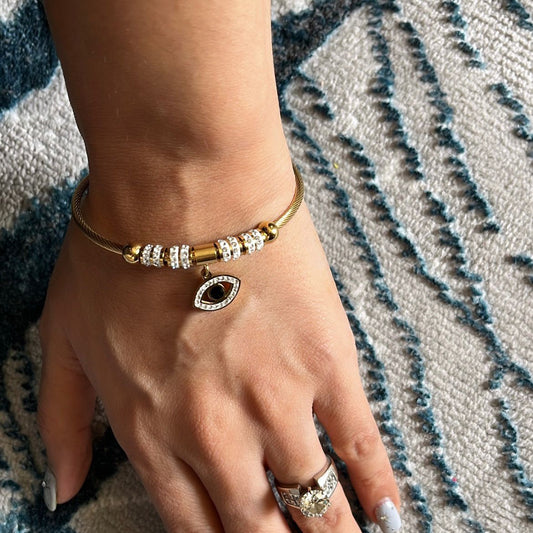Can earrings cause tetanus?
Share
Title: 🩺 Exploring the Link: Can Earrings Cause Tetanus? 💎
Introduction:
In the realm of health and wellness, concerns often arise regarding the potential risks associated with everyday activities and accessories. Among the questions that echo through the corridors of medical knowledge, one inquiry frequently surfaces: Can earrings cause tetanus? Let's delve into this topic, unraveling the connections and dispelling any misconceptions surrounding earrings and tetanus.
Understanding the Concern:
Earrings, as fashionable adornments worn on the ears, have adorned individuals for centuries, adding a touch of elegance and style to their appearance. However, amidst the allure of jewelry, questions emerge regarding whether earrings pose any risk of transmitting tetanus, a potentially serious bacterial infection.
Exploring the Transmission of Tetanus:
Tetanus, commonly known as "lockjaw," is caused by the bacterium Clostridium tetani, which thrives in environments with low oxygen levels, such as contaminated soil, dust, and rust. The bacteria can enter the body through breaks in the skin, including wounds, cuts, or puncture injuries, where they produce toxins that affect the nervous system, leading to muscle stiffness and spasms.
While tetanus can indeed result from puncture wounds or injuries caused by contaminated objects, such as rusty nails or metal implements, the likelihood of contracting tetanus from earrings is relatively low under normal circumstances. Earrings typically do not harbor the bacteria responsible for tetanus unless they come into contact with contaminated materials or surfaces.
Clarifying the Risk Factors:
The risk of tetanus transmission from earrings depends on several factors, including:
1. Sterility of Earrings: Earrings that are properly sterilized and maintained pose minimal risk of transmitting tetanus. It is essential to ensure that earrings are cleaned regularly and handled with care to reduce the risk of contamination.
2. Presence of Wounds: Tetanus transmission occurs when the bacteria enter the body through wounds or breaks in the skin. Individuals with recent ear piercings or existing ear injuries may be at slightly higher risk of tetanus if proper wound care and hygiene practices are not followed.
3. Environmental Contamination: Tetanus bacteria are commonly found in soil, dust, and rust. If earrings come into contact with contaminated surfaces or materials, there is a potential risk of tetanus transmission if they puncture the skin and introduce the bacteria into the body.
Navigating Ear Care Practices:
To minimize the risk of tetanus transmission associated with earrings, individuals can adopt the following preventive measures:
1. Maintain Hygiene: Clean earrings regularly with mild soap and water to remove dirt, debris, and bacteria. Avoid wearing earrings with open wounds or unhealed piercings, and ensure proper wound care to prevent infections.
2. Choose Safe Materials: Opt for earrings made from hypoallergenic materials, such as surgical stainless steel or titanium, to reduce the risk of allergic reactions and skin irritation. Avoid sharing earrings or using earrings with sharp edges that could cause injury.
3. Follow Piercing Guidelines: If undergoing ear piercing procedures, choose reputable piercing studios that adhere to strict sterilization and hygiene protocols. Follow aftercare instructions provided by piercing professionals to promote healing and reduce the risk of infection.
4. Stay Up-to-Date on Vaccinations: Tetanus vaccination, typically administered as part of routine childhood immunization schedules, provides long-lasting protection against tetanus infection. Ensure that vaccinations are up-to-date, especially if engaging in activities that may increase the risk of tetanus exposure.
Conclusion:
As we navigate the realm of earrings and their potential association with tetanus, it's essential to approach the topic with clarity and informed understanding. While earrings themselves pose minimal risk of tetanus transmission under normal circumstances, proper hygiene practices, wound care, and preventive measures can further reduce any potential risks associated with ear adornments. By prioritizing ear care and following recommended guidelines, individuals can enjoy the beauty of earrings while safeguarding their health and well-being. 💎🩺
Introduction:
In the realm of health and wellness, concerns often arise regarding the potential risks associated with everyday activities and accessories. Among the questions that echo through the corridors of medical knowledge, one inquiry frequently surfaces: Can earrings cause tetanus? Let's delve into this topic, unraveling the connections and dispelling any misconceptions surrounding earrings and tetanus.
Understanding the Concern:
Earrings, as fashionable adornments worn on the ears, have adorned individuals for centuries, adding a touch of elegance and style to their appearance. However, amidst the allure of jewelry, questions emerge regarding whether earrings pose any risk of transmitting tetanus, a potentially serious bacterial infection.
Exploring the Transmission of Tetanus:
Tetanus, commonly known as "lockjaw," is caused by the bacterium Clostridium tetani, which thrives in environments with low oxygen levels, such as contaminated soil, dust, and rust. The bacteria can enter the body through breaks in the skin, including wounds, cuts, or puncture injuries, where they produce toxins that affect the nervous system, leading to muscle stiffness and spasms.
While tetanus can indeed result from puncture wounds or injuries caused by contaminated objects, such as rusty nails or metal implements, the likelihood of contracting tetanus from earrings is relatively low under normal circumstances. Earrings typically do not harbor the bacteria responsible for tetanus unless they come into contact with contaminated materials or surfaces.
Clarifying the Risk Factors:
The risk of tetanus transmission from earrings depends on several factors, including:
1. Sterility of Earrings: Earrings that are properly sterilized and maintained pose minimal risk of transmitting tetanus. It is essential to ensure that earrings are cleaned regularly and handled with care to reduce the risk of contamination.
2. Presence of Wounds: Tetanus transmission occurs when the bacteria enter the body through wounds or breaks in the skin. Individuals with recent ear piercings or existing ear injuries may be at slightly higher risk of tetanus if proper wound care and hygiene practices are not followed.
3. Environmental Contamination: Tetanus bacteria are commonly found in soil, dust, and rust. If earrings come into contact with contaminated surfaces or materials, there is a potential risk of tetanus transmission if they puncture the skin and introduce the bacteria into the body.
Navigating Ear Care Practices:
To minimize the risk of tetanus transmission associated with earrings, individuals can adopt the following preventive measures:
1. Maintain Hygiene: Clean earrings regularly with mild soap and water to remove dirt, debris, and bacteria. Avoid wearing earrings with open wounds or unhealed piercings, and ensure proper wound care to prevent infections.
2. Choose Safe Materials: Opt for earrings made from hypoallergenic materials, such as surgical stainless steel or titanium, to reduce the risk of allergic reactions and skin irritation. Avoid sharing earrings or using earrings with sharp edges that could cause injury.
3. Follow Piercing Guidelines: If undergoing ear piercing procedures, choose reputable piercing studios that adhere to strict sterilization and hygiene protocols. Follow aftercare instructions provided by piercing professionals to promote healing and reduce the risk of infection.
4. Stay Up-to-Date on Vaccinations: Tetanus vaccination, typically administered as part of routine childhood immunization schedules, provides long-lasting protection against tetanus infection. Ensure that vaccinations are up-to-date, especially if engaging in activities that may increase the risk of tetanus exposure.
Conclusion:
As we navigate the realm of earrings and their potential association with tetanus, it's essential to approach the topic with clarity and informed understanding. While earrings themselves pose minimal risk of tetanus transmission under normal circumstances, proper hygiene practices, wound care, and preventive measures can further reduce any potential risks associated with ear adornments. By prioritizing ear care and following recommended guidelines, individuals can enjoy the beauty of earrings while safeguarding their health and well-being. 💎🩺









